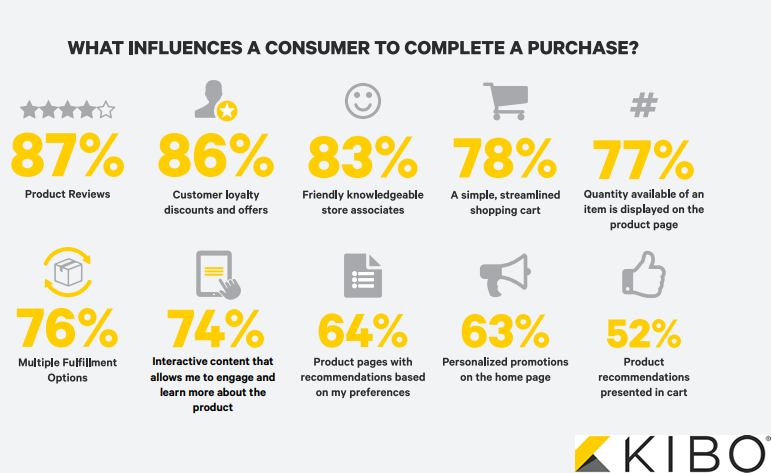Enhancing User Experience: The Key to Unlocking Your Website's Full Potential
For eCommerce businesses, having a great website is essential. Your website serves as a platform for customers to learn about products and make purchases. It needs to provide a positive user experience (UX).

This article will explore why UX is so important to website performance, common UX issues that lead to high bounce rates, the impact of bounce rates on conversion rates, how to measure UX, best practices for improving UX, and testing and optimizing your website for improved conversion rates.
Introduction to User Experience (UX)
User experience (UX) refers to a user's overall experience when interacting with a website or application. This includes everything from the ease of navigation to the speed of the website and the content's quality. A positive UX is essential to the success of a website. When visitors have a positive experience on a website, they are more likely to stay on the site longer, engage with the brand, and ultimately convert into customers.
Common UX Issues That Lead to High Bounce Rates
One of the most important factors in UX is website speed. In today's fast-paced world, visitors expect websites to load quickly. If a website takes less time to load, visitors are less likely to become frustrated and leave the site. This can lead to high bounce rates and a negative impact on conversion rates.
Another important factor in UX is website design. A website that is difficult to navigate or has a poor design can lead to a negative user experience. Visitors may become frustrated and leave the site, leading to high bounce rates and low engagement.
Additionally, poor content quality can also lead to high bounce rates. Visitors expect to find engaging and informative content on a website. If the content isn’t well-written or relevant, visitors will likely leave the site and look for information elsewhere.
The Impact of Bounce Rates on Conversion Rates
Bounce rate refers to the percentage of visitors who leave a website after viewing only one page. A high bounce rate can hurt conversion rates. If visitors leave a website quickly, they do not engage with the brand or consider purchasing.
However, it is important to note that not all bounce rates are bad. If a visitor finds what they are looking for on the first page of a website and then leaves, this can be a positive experience. The bounce rate becomes an issue only when visitors leave a website quickly because of a negative UX.
If you have a high bounce rate, it is important to identify the factors causing it and take steps to address them. By improving your website's loading speed, user experience, and content, you can reduce your bounce rate and improve your conversion rate.
Here are some examples of how bounce rates can impact conversion rates:
- A study by Portent found that e-commerce conversion rates decrease by an average of 0.3% for every additional second it takes for a website to load.
- Stanford proved that 46.1% of visitors consider a website’s design a major factor in credibility, essential in raising conversion rates.
- Digital Marketing Community ranked content like product reviews as the first factor influencing a consumer to complete a purchase with a rate of 87%. See below for more content statistics.
How to Measure User Experience
Measuring UX is essential to improving website performance. There are several tools available to measure UX, including Google Analytics, Hotjar, and Crazy Egg. These tools allow website owners to track visitor behavior, identify UX issues, and improve the website.
As mentioned, bounce rate is one of the most important metrics to track. A high bounce rate can indicate a negative UX, while a low bounce rate can indicate a positive UX. Other metrics to track include time on site, pages per session, and conversion rate.
Best Practices for Improving User Experience
Improving UX is essential to the success of a website. Website owners can follow several best practices to improve UX, including designing for mobile users, optimizing website speed, and creating engaging and informative content.
Designing for mobile users is essential in today's world. More and more people are accessing websites on their mobile devices, so it is important to ensure that the website is mobile-friendly. This includes using responsive design and ensuring that the website is easy to navigate on a mobile device.
Optimizing website speed is also essential to improving UX. Website owners can optimize website speed by compressing images, using a content delivery network (CDN), and minimizing HTTP requests.
Creating engaging and informative content is also important to improving UX. Visitors expect to find high-quality content on a website. This includes well-written blog posts, informative product descriptions, and engaging videos.
Testing and Optimizing Your Website for Improved Conversion Rates
Testing and optimizing your website is essential to improving conversion rates. Several tools are available to help website owners test and optimize their websites, including A/B testing tools and heat mapping tools.
A/B testing involves creating two versions of a website and testing them against each other to see which one performs better. Heat mapping tools track visitor behavior on a website and can help identify UX issues.
Once UX issues have been identified, website owners can make improvements to the website to boost conversion rates.
The Importance of User Experience in Driving Website Success
A positive UX can lead to increased engagement, lower bounce rates, and higher conversion rates. Conversely, a negative UX can lead to high bounce rates, low engagement, and low conversion rates. By understanding the importance of UX and following best practices for improving UX, eCommerce business owners can transform their website's performance and boost revenue.
Contact Room 214 today to learn more about how we can help improve your website's UX and drive success for your business.


Comments